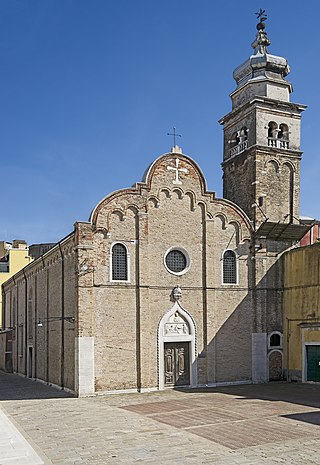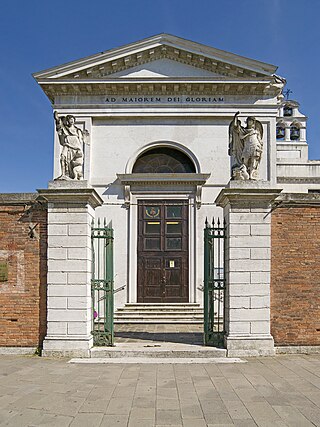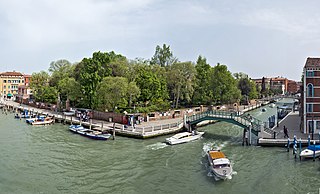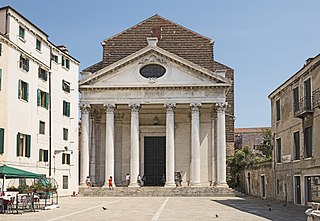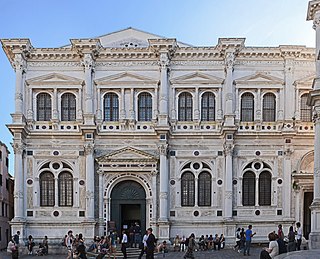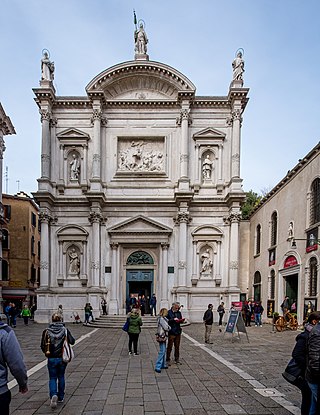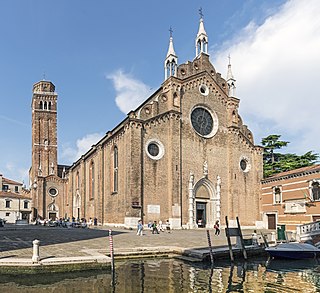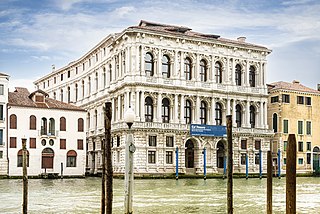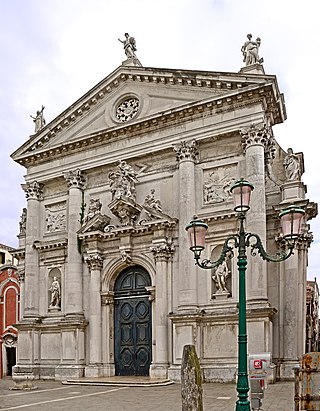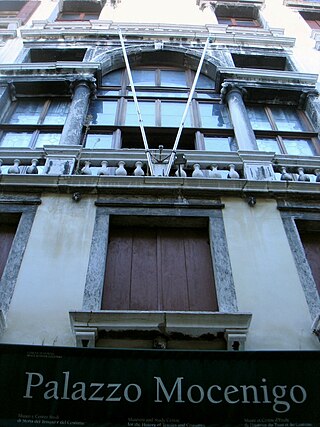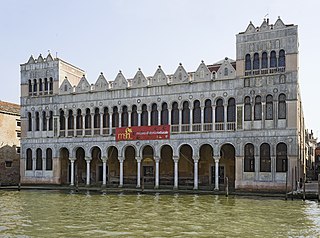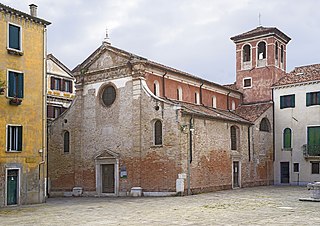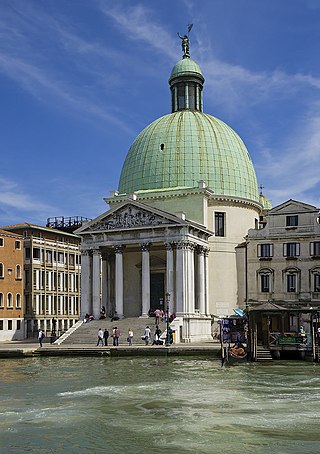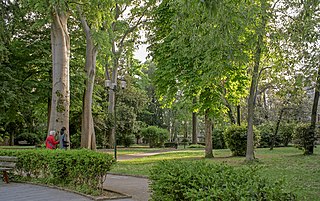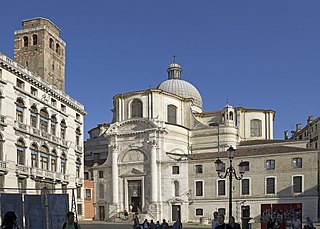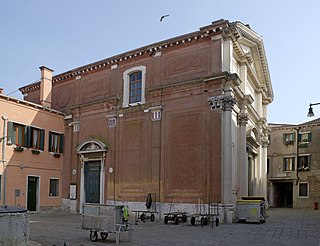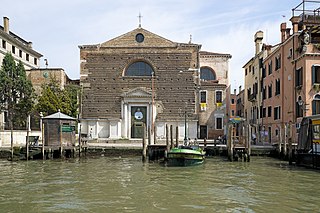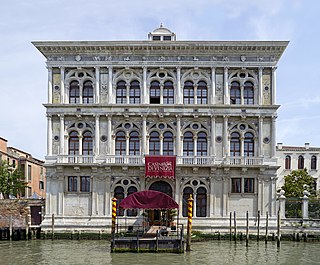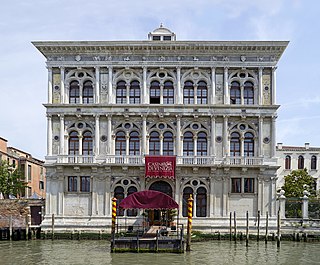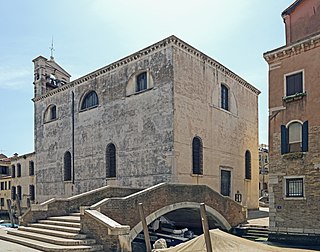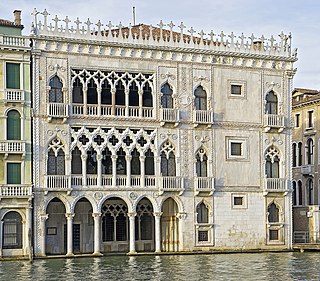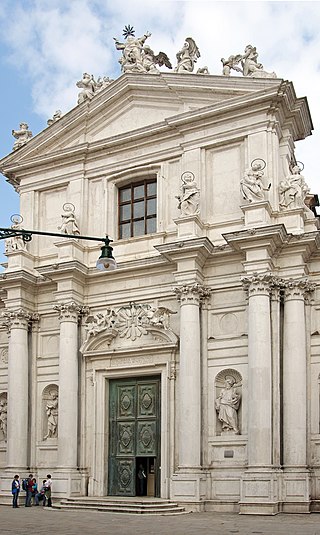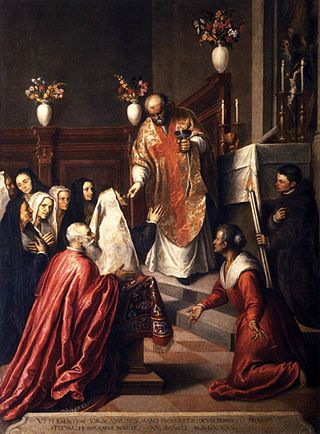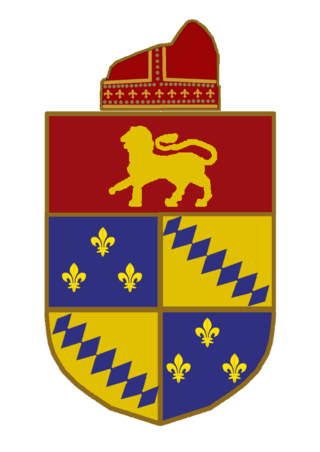Self-guided Sightseeing Tour #5 in Venice, Italy
Legend
Guided Free Walking Tours
Book free guided walking tours in Venice.
Guided Sightseeing Tours
Book guided sightseeing tours and activities in Venice.
Tour Facts
7.3 km
96 m
Experience Venice in Italy in a whole new way with our free self-guided sightseeing tour. This site not only offers you practical information and insider tips, but also a rich variety of activities and sights you shouldn't miss. Whether you love art and culture, want to explore historical sites or simply want to experience the vibrant atmosphere of a lively city - you'll find everything you need for your personal adventure here.
Activities in VeniceIndividual Sights in VeniceSight 1: Sant'Andrea della Zirada
Sant'Andrea della Zirada is a church and a monastery in Venice, northern Italy.
Sight 2: Chiesa del Nome di Gesù
The Church of the Name of Jesus is a religious building in the city of Venice, located in the Santa Croce district, between the first stretch of the Ponte della Libertà and the church of Sant'Andrea della Zirada.
Sight 3: Giardini Papadopoli
Giardino Papadopoli is a terraced garden filled with shade trees in the Venetian sestiere of Santa Croce, between the Venezia Santa Lucia train station and Piazzale Roma.
Sight 4: San Nicola da Tolentino
The Chiesa di San Nicolò da Tolentino, commonly known as the Tolentini, is a church in the sestiere of Santa Croce in Venice, northern Italy. It lies in a Campo of the same name and along the Rio dei Tolentini, near the Giardino Papadopoli.
Sight 5: Scuola Grande di San Rocco
Get Ticket*The Scuola Grande di San Rocco is a building in Venice, northern Italy. It is noted for its collection of paintings by Tintoretto and generally agreed to include some of his finest work.
Sight 6: Chiesa di San Rocco
The church of San Rocco is a religious building located in Campo San Rocco, in the San Polo district, Venice.
Sight 7: Basilica di Santa Maria Gloriosa dei Frari
The Basilica di Santa Maria Gloriosa dei Frari, commonly abbreviated to the Frari, is a church located in the Campo dei Frari at the heart of the San Polo district of Venice, Italy. It is the largest church in the city and it has the status of a minor basilica. The church is dedicated to the Assumption of Mary.
Sight 8: Chiesa di San Giovanni Evangelista
The church of San Giovanni Evangelista is a 15th-century religious building in the San Polo sestiere of the Italian city of Venice. It stands across a courtyard from the Scuola Grande di San Giovanni Evangelista.
Sight 9: Oriental Art Museum
The Museum of Oriental Art of Venice is located inside Ca' Pesaro in the Santa Croce district, near Campo San Stae.
Sight 10: Chiesa di San Stae
San Stae is a church in central Venice, in the sestiere of Santa Croce.
Sight 11: Palazzo Mocenigo
Get Ticket*The Museo di Palazzo Mocenigo is a palazzo near the Church of San Stae, south of the Grand Canal in the sestiere of Santa Croce in Venice, Italy. It is now a museum of fabrics and costumes, run by the Fondazione Musei Civici di Venezia.
Sight 12: Natural History Museum
The Giancarlo Ligabue Museum of Natural History of Venice, until 30 October 2019 the Civic Museum of Natural History, is located inside the Fondaco dei Turchi, the important palace in Venice overlooking the Grand Canal.
Wikipedia: Museo di Storia Naturale di Venezia Giancarlo Ligabue (IT)
Sight 13: San Giovanni Decollato
The church of San Zan Degolà, which in the Venetian dialect is the abbreviation for San Giovanni Decollato, in English St John beheaded, is a Byzantine-Romanesque-style church and belltower in the sestiere of Santa Croce in Venice, Italy.
Sight 14: Chiesa di San Simeone Profeta
San Simeone Profeta, also known as San Simeone Grande is a church in the sestiere of Santa Croce in Venice, Italy. The adjective Grande distinguishes this church from the San Simeone Piccolo, which was smaller in size until its 18th-century reconstruction. The near palaces are Palazzo Gradenigo and Palazzo Soranzo Cappello.
Sight 15: Chiesa di San Simeon Piccolo
San Simeone Piccolo is a church in the sestiere of Santa Croce in Venice, northern Italy. From across the Grand Canal it faces the railroad terminal serving as entrypoint for most visitors to the city.
Sight 16: Chiesa di Santa Maria di Nazareth
Santa Maria di Nazareth is a Roman Catholic Carmelite church in Venice, northern Italy. It is also called Church of the Scalzi being the seat in the city of the Discalced Carmelites religious order. Located in the sestiere of Cannaregio, near Venezia Santa Lucia railway station, it was built in the mid-17th century to the designs of Baldassarre Longhena and completed in the last decades of that century.
Sight 17: Parco Savorgnan
The Parco Savorgnan is a public park in the Venetian district (sestiere) Cannaregio with the size of about 9500 m². It originally belonged to the neighboring Palazzo Savorgnan, the residence of the Venetian noble family of the same name, which is now used for educational purposes. The old and partly exotic plant population used to be protected by temporary greenhouses. Today, the park is owned by the Municipality and the Province of Venice and also includes the green area belonging to Palazzo Venier Manfrin. It is one of the rare inner-city green spaces of the lagoon city and is mainly used for recreational purposes. Remnants of the old garden staffage, such as a pavilion, have been preserved.
Sight 18: Chiesa dei Santi Geremia e Lucia
The Church of San Geremia since 2018 also holds the title of Sanctuary of Santa Lucia. It is located in Venice in the Cannaregio district. It is an important place of worship of medieval origin, rebuilt on several occasions but in its current form only between the eighteenth and nineteenth centuries. The property is rich in works of art. It houses various illustrious relics on which the mortal remains of Saint Lucia of Syracuse stand out, which arrived in the church in the nineteenth century, following the demolition of the church of Santa Lucia located on the site of the Venice railway station.
Sight 19: Chiesa di San Leonardo
The church of San Leonardo is a deconsecrated religious building of the city of Venice located in the Cannaregio district along the Nova road.
Sight 20: Chiesa San Marcuola
The church of San Marcuola is a religious building facing the Grand Canal and located in the sestiere of Cannaregio in Venice, Italy. It is dedicated to the saints Hermagoras and Fortunatus. Palazzo Memmo Martinengo Mandelli is a neighboring building.
Sight 21: Casinò di Venezia
The Venice Casino was founded in 1638 and is recognized as the oldest gambling house in the world.
Sight 22: Ca' Vendramin Calergi - Casinò di Venezia
Ca' Loredan Vendramin Calergi is a 15th-century palace on the Grand Canal in the sestiere (quarter) of Cannaregio in Venice, northern Italy. It was commissioned by the patrician Loredan dynasty, namely Andrea Loredan, and paid for by Doge Leonardo Loredan, with construction starting in 1481. The architecturally distinguished building was the home of many prominent people through history and was the place where composer Richard Wagner died.
Sight 23: La Maddalena
La Maddalena is a church in Venice, Italy, in the sestiere of Cannaregio.
Sight 24: Chiesa di San Marziale
San Marziale is a church building in the sestiere or neighborhood of Cannaregio in Venice.
Sight 25: Paolo Sarpi
Paolo Sarpi was a Venetian historian, prelate, scientist, canon lawyer, polymath and statesman active on behalf of the Venetian Republic during the period of its successful defiance of the papal interdict (1605–1607) and its war (1615–1617) with Austria over the Uskok pirates. His writings, frankly polemical and highly critical of the Catholic Church and its Scholastic tradition, "inspired both Hobbes and Edward Gibbon in their own historical debunkings of priestcraft." Sarpi's major work, the History of the Council of Trent (1619), was published in London in 1619; other works: a History of Ecclesiastical Benefices, History of the Interdict and his Supplement to the History of the Uskoks, appeared posthumously. Organized around single topics, they are early examples of the genre of the historical monograph.
Sight 26: Chiesa di Santa Fosca
Sight 27: Chiesa di San Felice
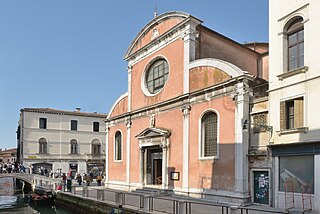
San Felice is a church in Venice, northern Italy, located in the sestiere (district) of Cannaregio. It faces the eponymous campo (square), across the Strada Nova.
Sight 28: Ca' d'Oro
The Ca' d'Oro, or Palazzo Santa Sofia, is a palace on the Grand Canal in Venice, northern Italy. One of the older palaces in the city, its name means "golden house" due to the gilt and polychrome external decorations that once adorned its walls. Since 1927, it has been used as a museum, as the Galleria Giorgio Franchetti.
Sight 29: Chiesa di Santa Sofia
Santa Sofia is a church located in the sestiere (neighborhood) of Cannaregio in Venice, Italy. It should be distinguished from the palazzo Ca' d'Oro on the Grand Canal is also called the Palazzo Santa Sofia.
Sight 30: Chiesa dei Santi Apostoli
The Chiesa dei Santi Apostoli di Cristo, commonly called San Apostoli, is a 7th-century Roman Catholic church located in the Cannaregio sestiere of the Italian city of Venice. It is one of the oldest churches in the city and has undergone numerous changes since its foundation. The present building is the result of a major reconstruction project which was undertaken in 1575. The church is notable particularly for the Cornaro Chapel, an important example of Early Renaissance architecture, added by Mauro Codussi during the 1490s. The chapel is the burial place of several members of the powerful Cornaro family, including Catherine Cornaro, Queen of Cyprus and Armenia. The church houses several works of art including pieces by Giambattista Tiepolo and Paolo Veronese.
Sight 31: Chiesa di Santa Maria Assunta
The church of Santa Maria Assunta, commonly known as the church of the Jesuits, is a religious building in Venice, located in the Cannaregio district, in Campo dei Gesuiti, not far from the Fondamenta Nuove.
Wikipedia: Chiesa di Santa Maria Assunta detta I Gesuiti (IT)
Sight 32: Oratorio dei Crociferi
The Oratorio dei Crociferi is a small Roman Catholic chapel found across from the church of the Gesuiti in the sestiere of Cannaregio in Venice, Italy.
Sight 33: Ex chiesa Santa Caterina
The "Marco Foscarini" high school is the oldest high school in Venice and one of the oldest in Italy, having been founded in 1807 by decree of Eugene of Beauharnais, viceroy of Italy and godson of Napoleon I, who established six high schools in as many cities of the kingdom of Italy. At its foundation it was known as the lyceo-boarding school of Santa Caterina, from the name of the former convent in which it is still located, in the Cannaregio district a few hundred meters from the shore of the Fondamente Nove, and as the I.R. Gymnasium Liceale di Santa Caterina from 1850 to 1867.
Share
Disclaimer Please be aware of your surroundings and do not enter private property. We are not liable for any damages that occur during the tours.
GPX-Download For navigation apps and GPS devices you can download the tour as a GPX file.
